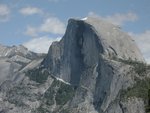Yellowstone National Park's 2011 "Natural Resource Vital Signs" report is helping park managers and scientists more fully understand the status of important ecological "health indicators."
Park scientists and their cooperators are reporting on data from more than two dozen natural resource indicators to study the influences both inside and outside of the park that affect Yellowstone's overall ecological and environmental stability. These indicators include examining ecosystem processes such as wildland fire as well as environmental quality, native species and stressors such as wildlife disease and non-native species.
The report published by the Yellowstone Center for Resources (YCR) helps guide resource management decisions and supports ongoing and future research needs. The first study was conducted and published in 2008.
Among the health indicators studied, a number of significant new highlights have emerged:
• Earthquakes: More than 3,000 earthquakes were detected in the park in 2010, including a "swarm" of 2,400 quakes northwest of Old Faithful near the beginning of the year, the largest concentration since 1985.
• Grizzly Bears: Bear populations reached 602 in the Greater Yellowstone Ecosystem in 2010, the largest number since the recovery program began in 1975.
• Bison: Efforts have been made by the State of Montana in coordination with the Interagency Bison Management partners to expand winter grazing areas north of the park. The park now numbers around 3,700 bison, down slightly from 2010.
• Invasive Species: Since 1994 more than 550,000 invasive Lake Trout have been removed from Yellowstone Lake to help revive the population of native Yellowstone Cutthroat Trout.
• Wolves: Yellowstone's wolf population was approximately 100. However, wolf numbers in the GYE have increased.
Over the next year, the Yellowstone Center for Resources, along with its research partners, will re-examine these vital signs with a special emphasis on including cultural resource indicators.
The 2011 report can be found online at http://www.greateryellowstonescience.org/sites/default/files/Vital_signs_report_2011NOV.pdf
For more information on YCR, visit http://www.greateryellowstonescience.org/.
New 'Vital Signs' Report Documenting Yellowstone's Ecological Health
All posts are those of the individual authors and the owner
of this site does not endorse them. Content should be considered opinion
and not fact until verified independently.
Sorry, only registered users may post in this forum.


